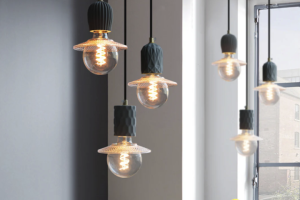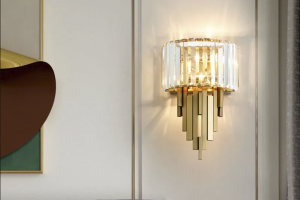Introduction
Hidden lighting ceilings are becoming increasingly popular in the world of interior design. This type of lighting involves concealing light fixtures within the ceiling, creating a soft and subtle glow that enhances the overall ambiance of the room. In this article, we will explore the characteristics and benefits of hidden lighting ceilings, as well as the different types of fixtures and design options available.
What are Hidden Lighting Ceilings?
Hidden lighting ceilings are essentially a collection of light fixtures that are installed inside the ceiling itself. The fixtures can be installed in different configurations depending on the desired effect, such as in straight or curved lines, in a grid formation, or even in a specific pattern. Once installed, the light fixtures are typically controlled using a dimmer switch, allowing the user to adjust the brightness and create different moods and atmospheres within the room.
The Benefits of Hidden Lighting Ceilings
One of the most significant advantages of hidden lighting ceilings is their ability to add warmth and depth to a room. Because the fixtures are concealed within the ceiling, the light appears to radiate from an unidentifiable source, creating a soft and calming glow that can make any space feel cozy and inviting. Additionally, hidden lighting ceilings are incredibly versatile and can be used in a wide range of different settings, from residential homes to commercial spaces.
Another benefit of hidden lighting ceilings is their ability to create the illusion of increased height in a room. By illuminating the ceiling, the source of the light is removed from eye level, which draws the eye upward and creates the perception of more vertical space. This effect is particularly useful in spaces with low ceilings, where traditional lighting fixtures can feel claustrophobic.
Types of Hidden Lighting Ceiling Fixtures
There are several different types of fixtures that can be used in hidden lighting ceilings, each with its unique advantages and applications. Some of the most popular options include:
– LED strip lighting: This type of lighting consists of long, narrow strips of LED lights that can be cut to fit the desired length. LED strip lighting is incredibly versatile and can be used to create straight lines or curved shapes.
– Recessed lighting: Recessed lighting fixtures are installed directly into the ceiling, creating a flush and seamless look. These fixtures come in a variety of shapes and sizes, making them suitable for a wide range of design applications.
– Chandeliers and pendant lights: While not typically considered hidden lighting, chandeliers and pendant lights can be installed in such a way that they create a soft and subtle glow across the ceiling.
Design Options for Hidden Lighting Ceilings
When designing a hidden lighting ceiling, there are several options to choose from, depending on the desired effect. Some popular design options include:
– Linear designs: Linear designs are created using straight lines of light fixtures, either in parallel or perpendicular configurations. This design is particularly effective in contemporary and minimalist spaces.
– Curved designs: Curved designs are created using flexible LED strips, which can be bent into any shape desired. This design is particularly useful for creating organic and flowing patterns.
– Custom designs: Custom designs allow for complete creative freedom, allowing designers to create unique and personalized patterns and shapes.
Conclusion
Hidden lighting ceilings are an effective and versatile way to add warmth, depth, and dimension to any space. With a wide range of lighting fixtures and design options available, there are endless possibilities for creating unique and inviting environments. Whether you prefer a linear, curved, or custom design, hidden lighting ceilings offer an innovative and stylish way to illuminate your home or business.




More Posts
Stunning Vintage Opaline Lights: Illuminating Homes with Timeless Elegance
Bringing Versatility to Light: Exploring the Benefits of Dual Light Technology
Shining Light on E14 Bulbs: The Ultimate Guide to Understanding and Using Them